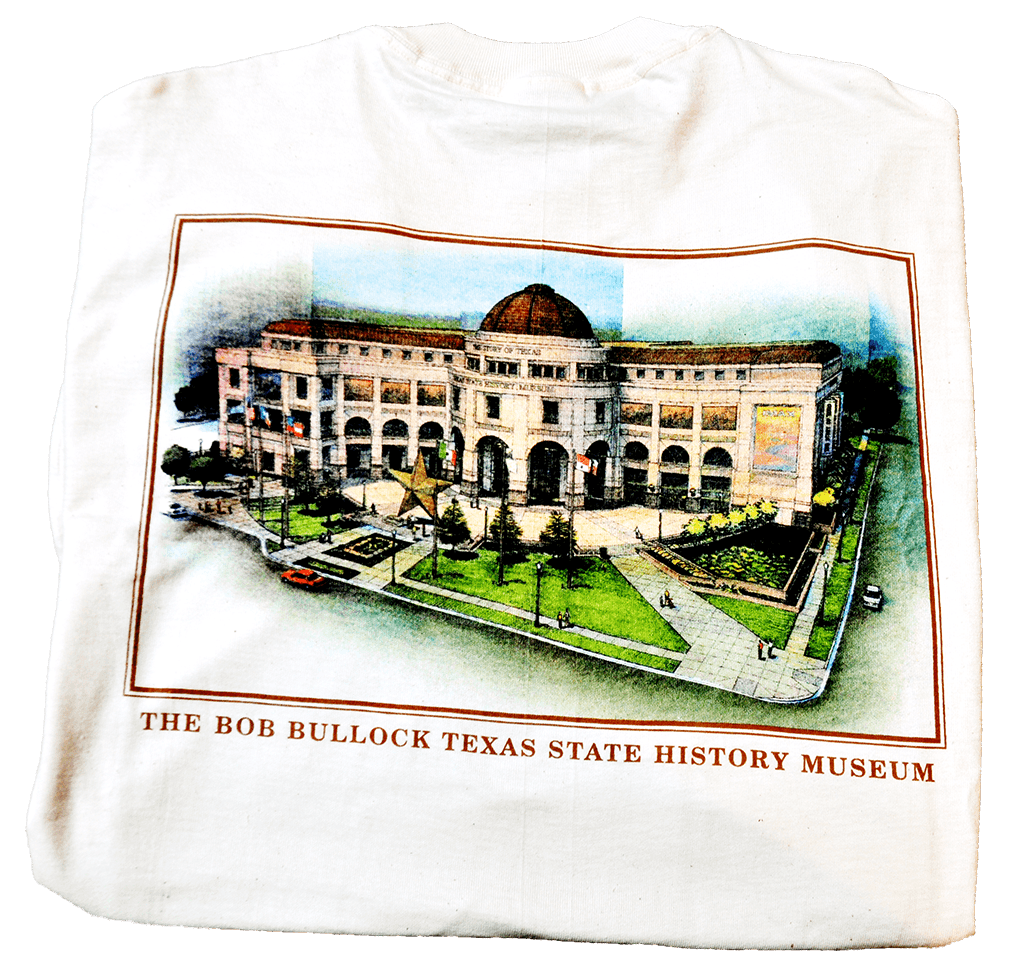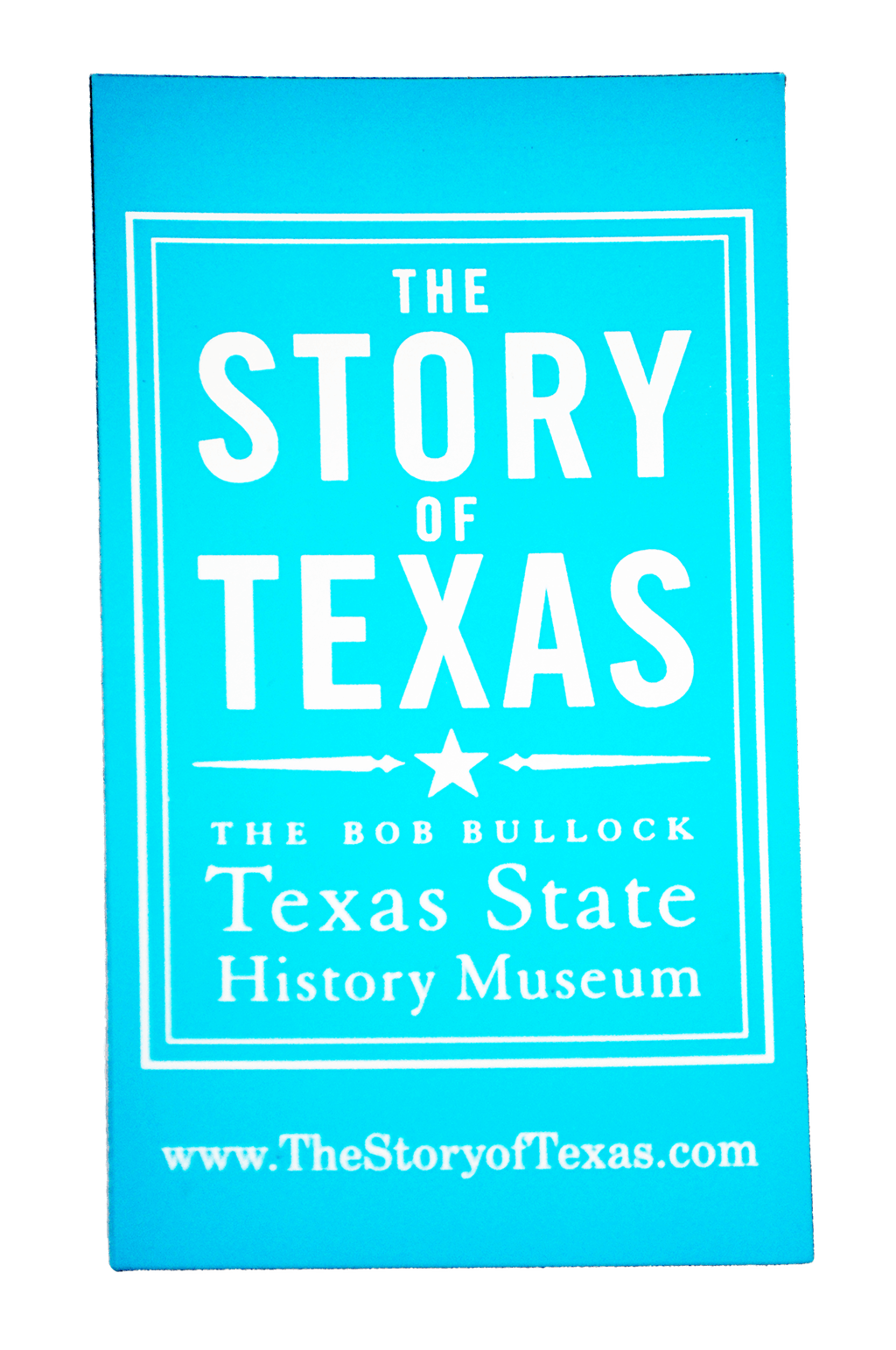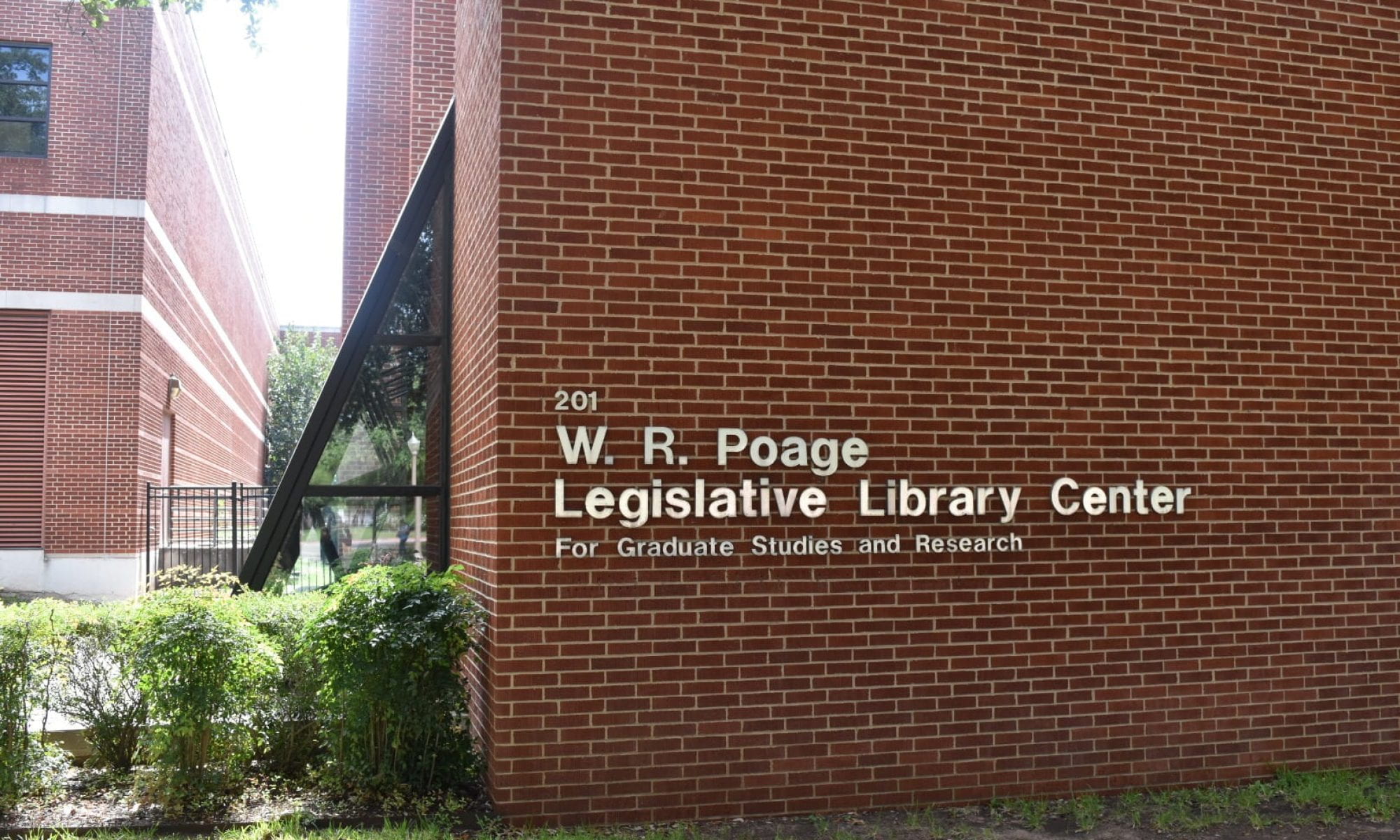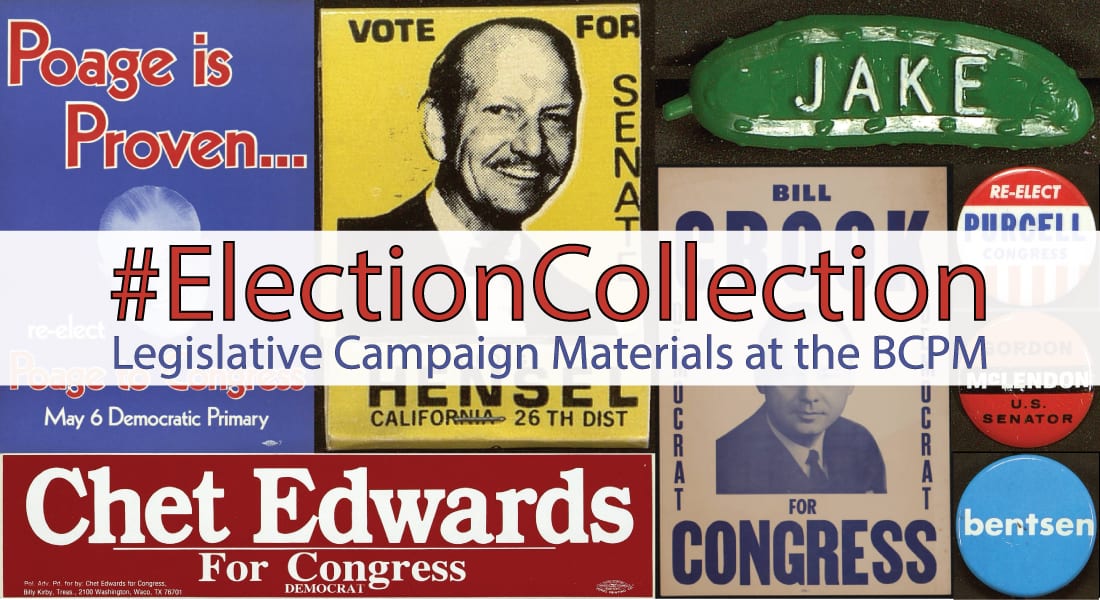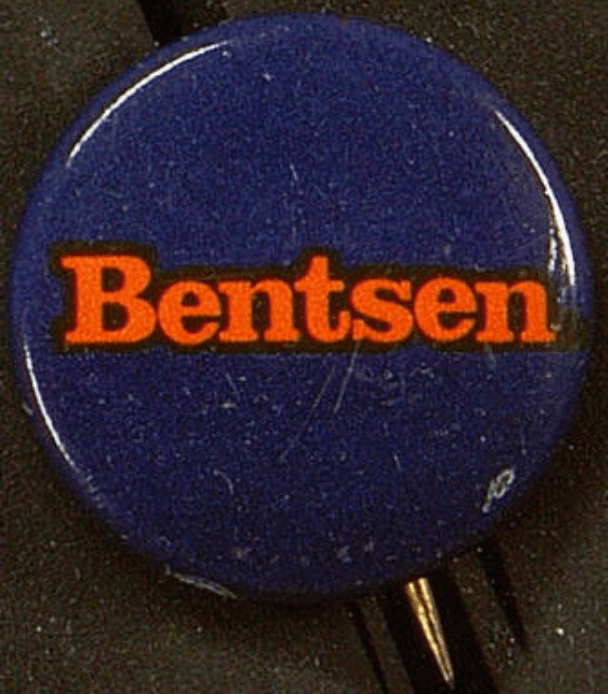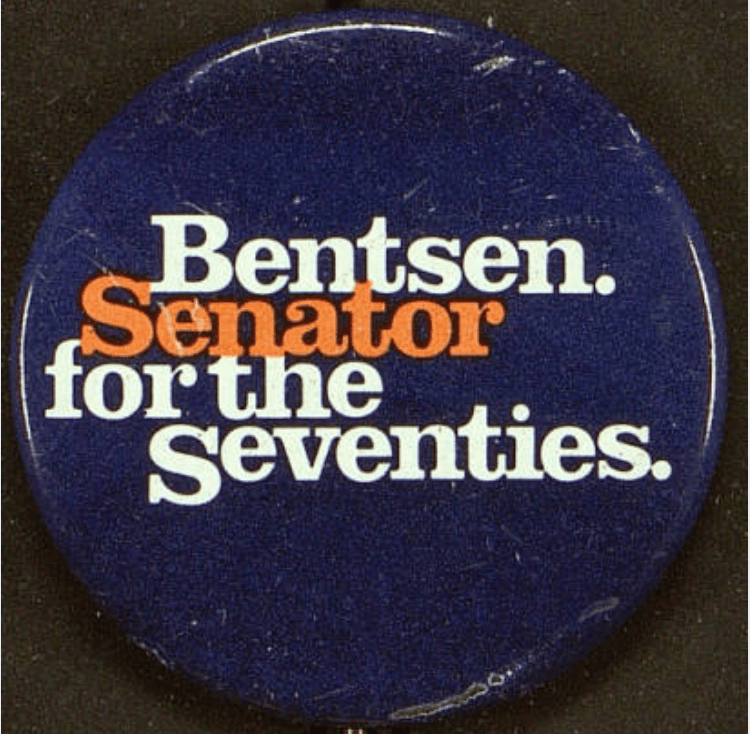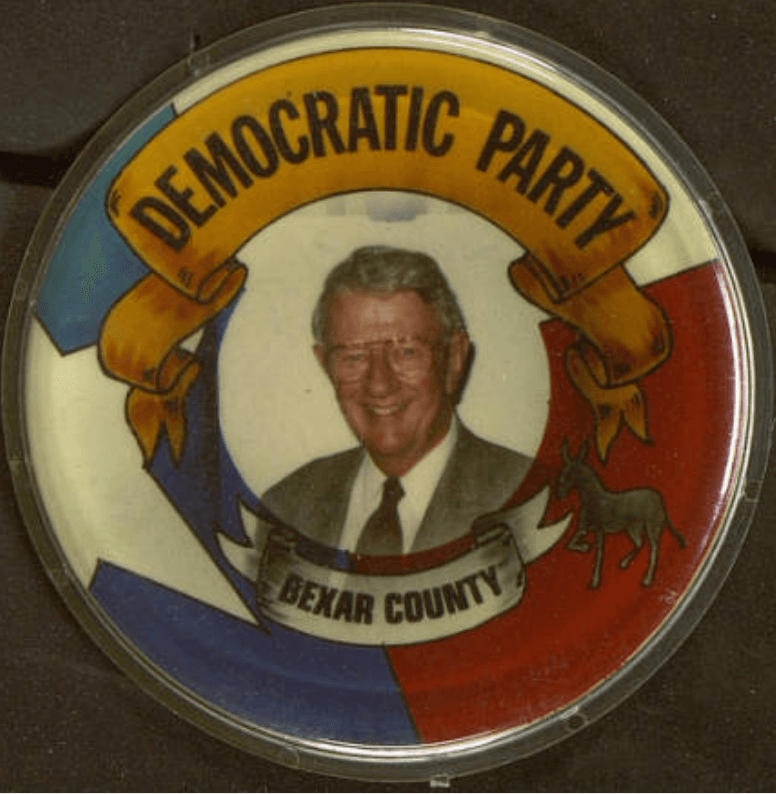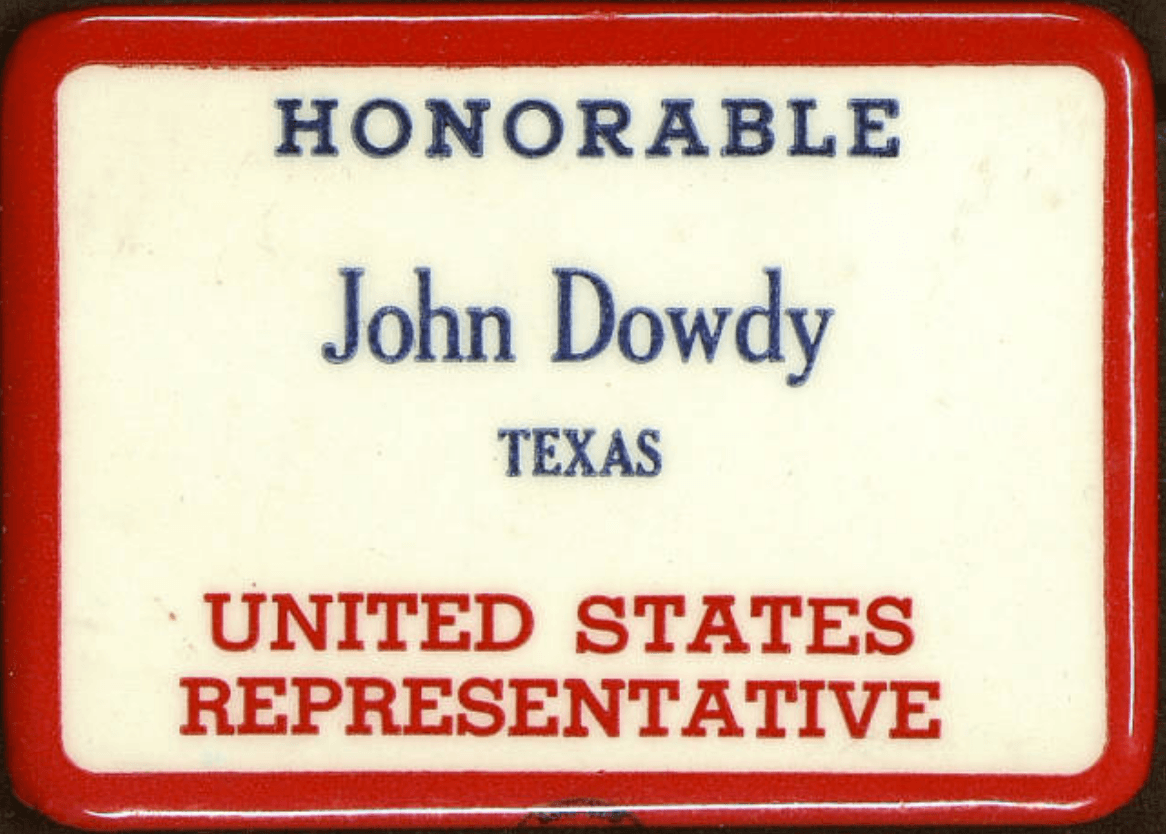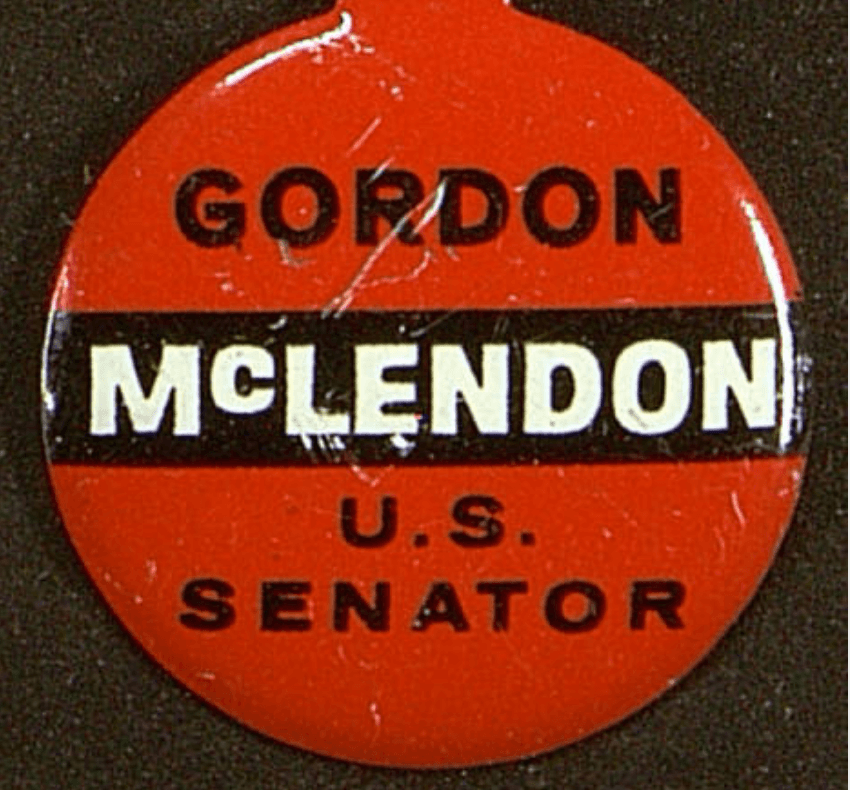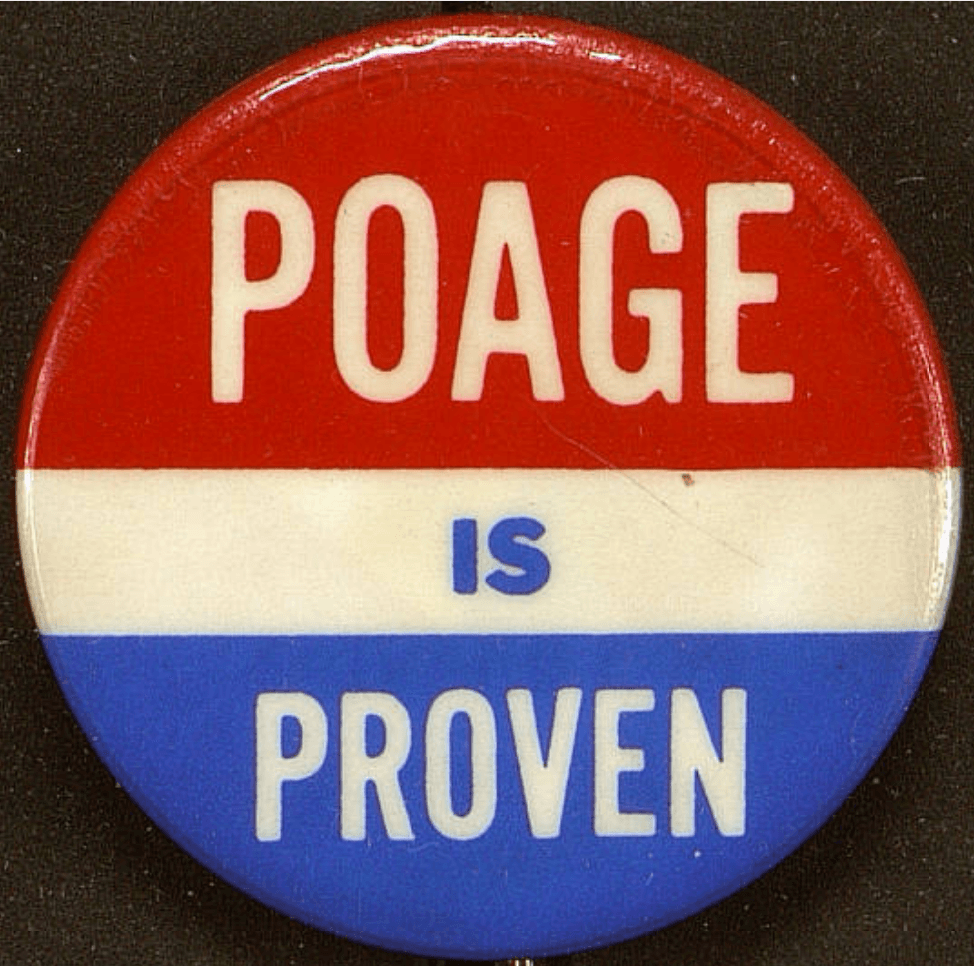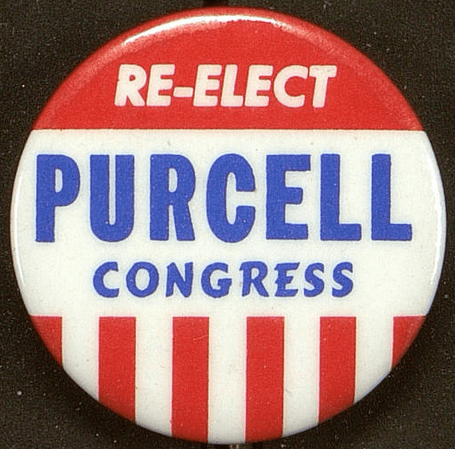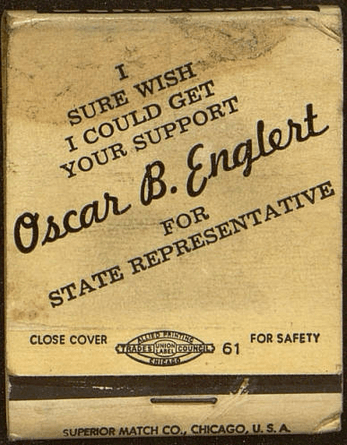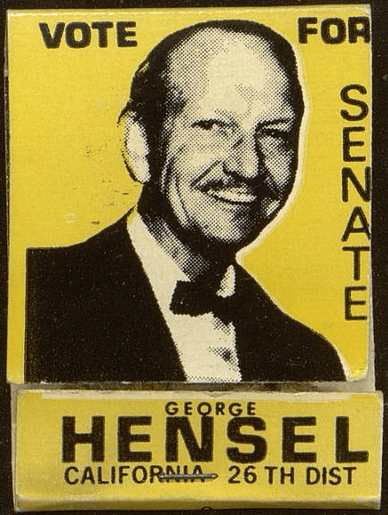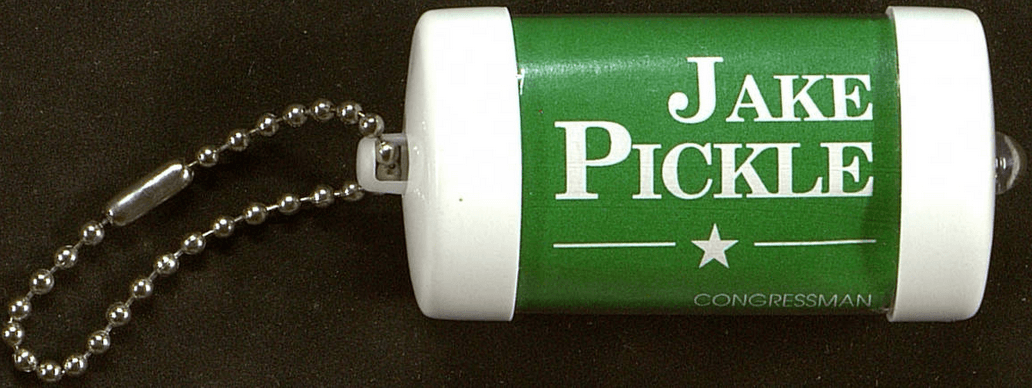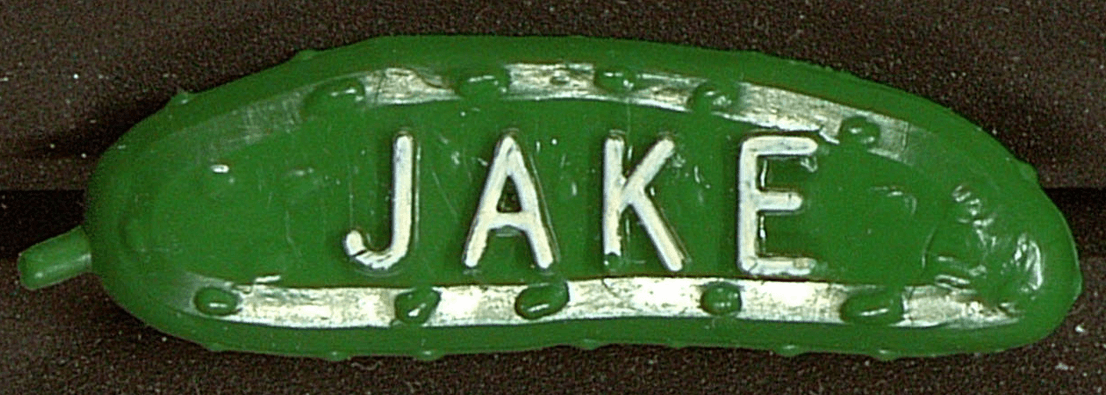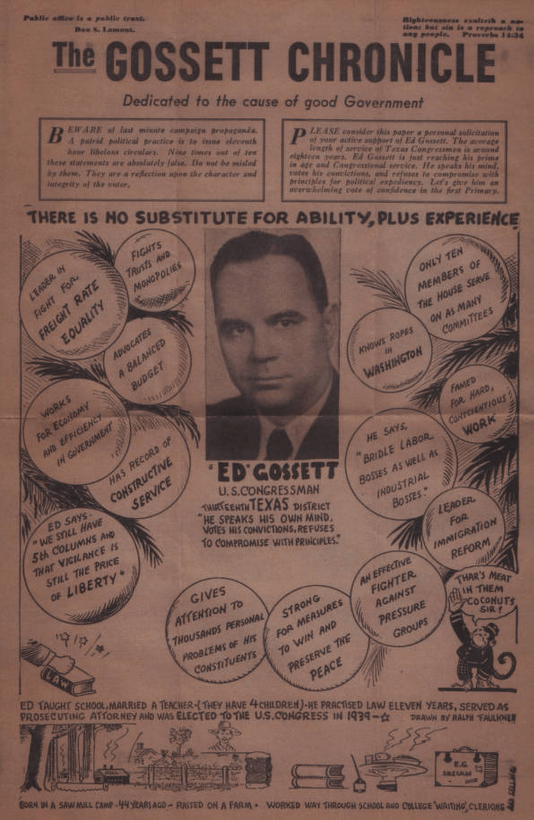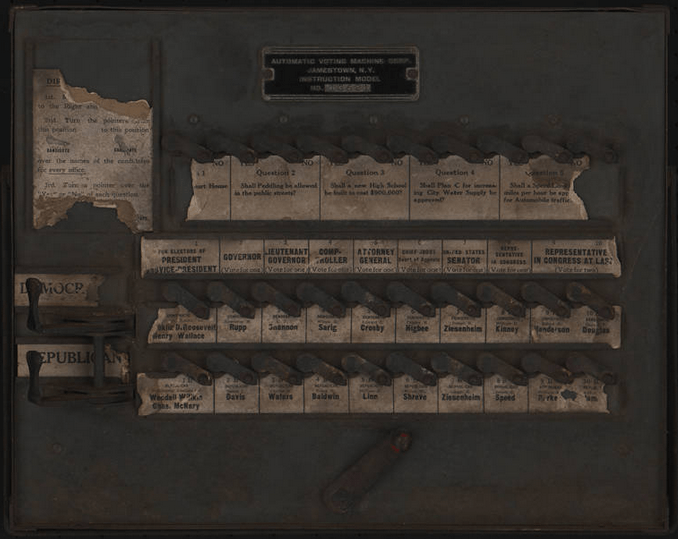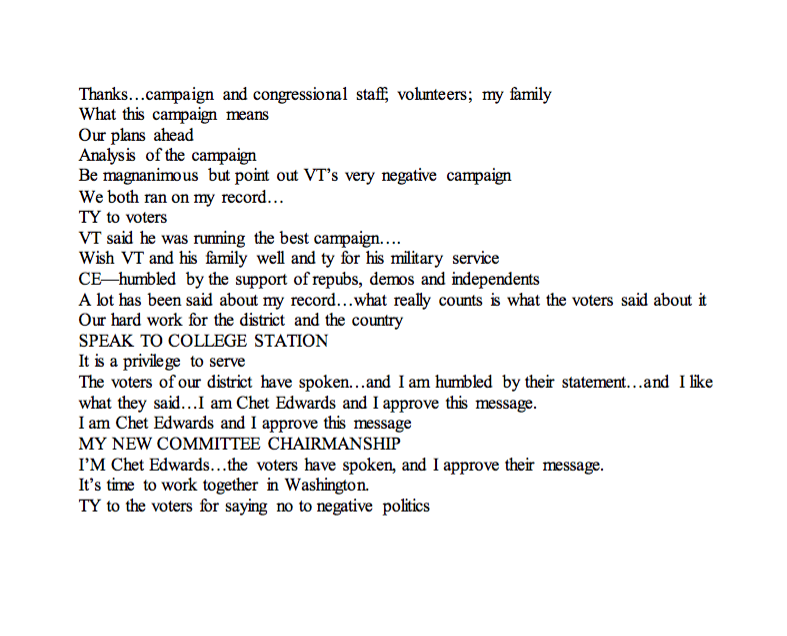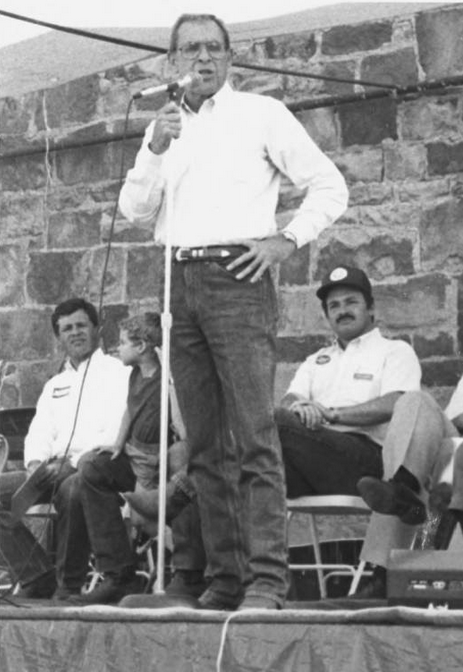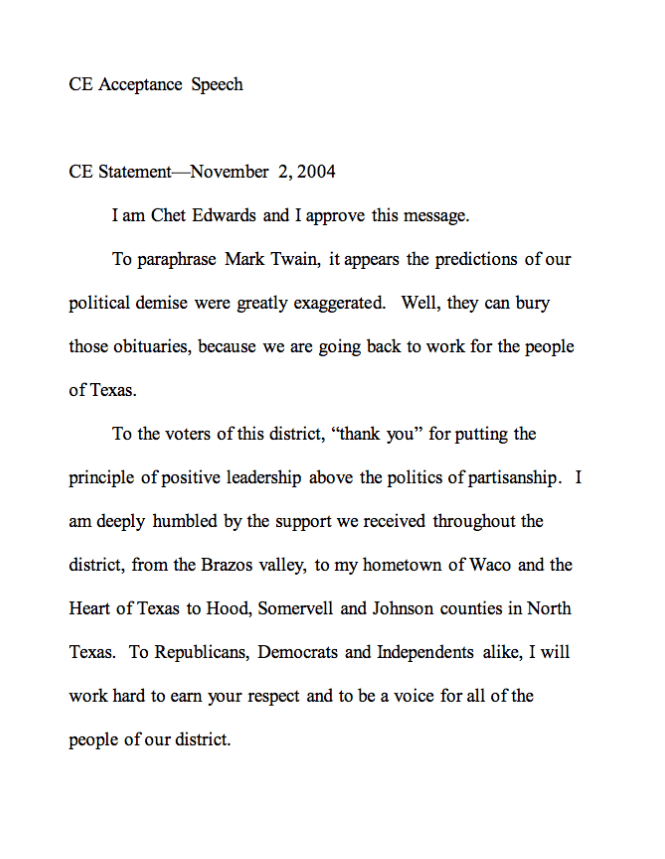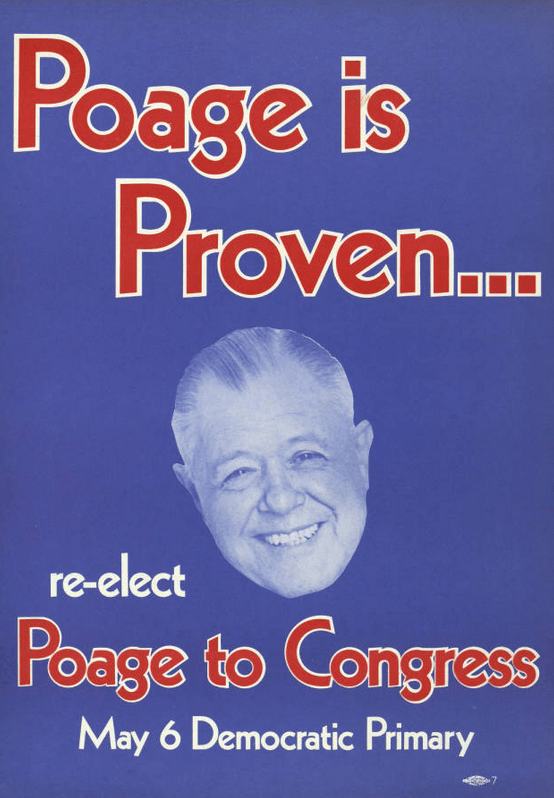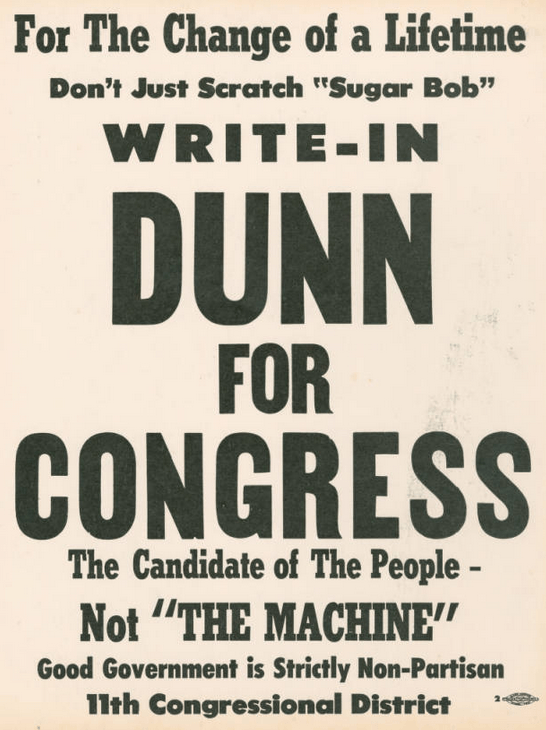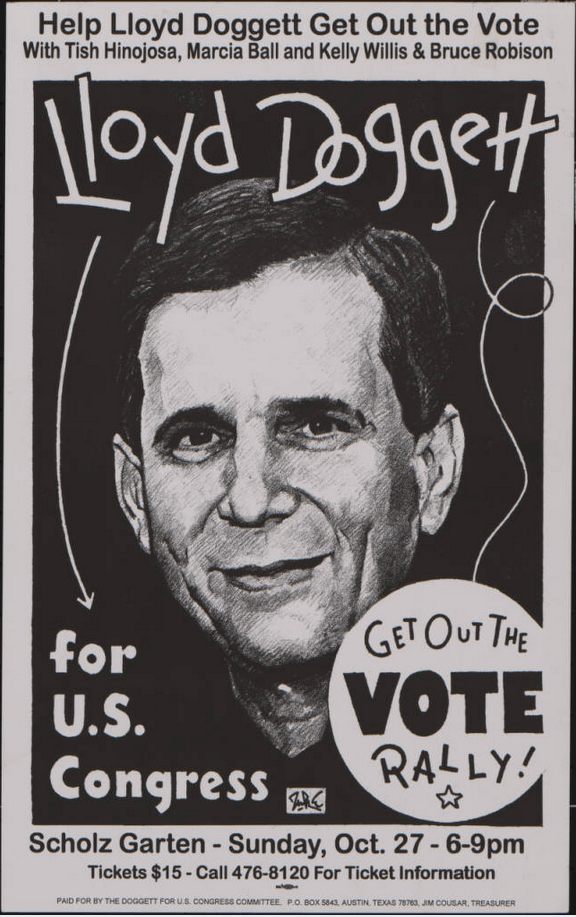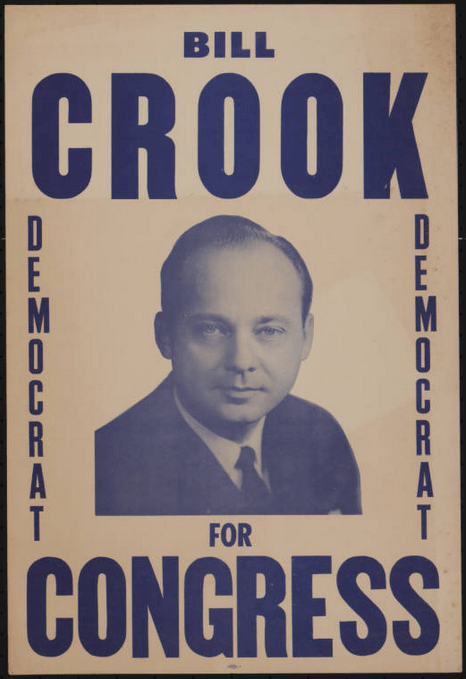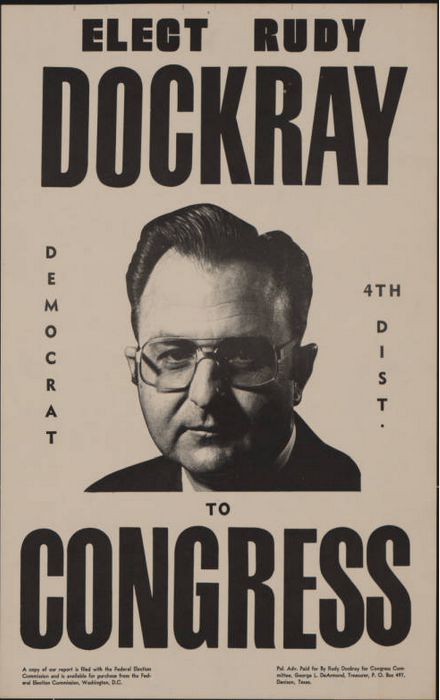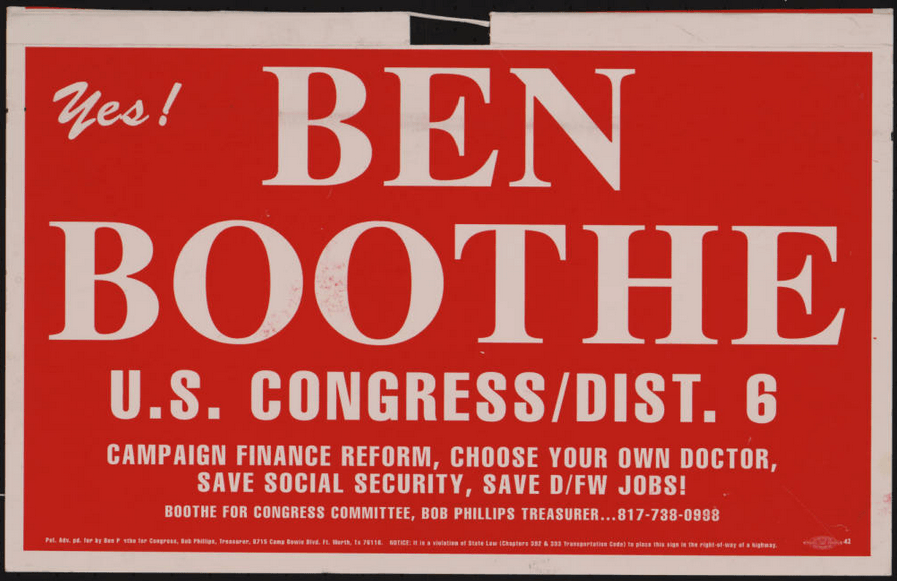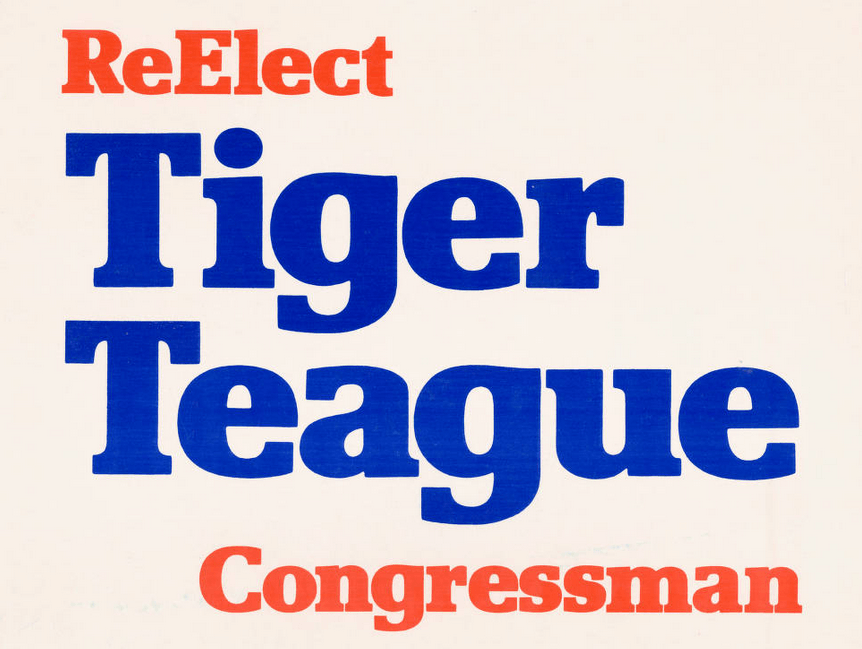In celebration of Bob Bullock, an exhibit is currently on display at the W.R. Poage Legislative Library honoring his long and transformational political career. We encourage you to visit, however, if you cannot visit the exhibit in person this webpage will give you a good sampling of what is on display.
Brief Biography
Robert “Bob” Douglas Bullock, Sr. was born in the small Texas community of Hillsboro on July 10, 1929. Bullock had a lengthy career as a Texas politician beginning in 1956 when he was elected to the Texas House of Representatives.
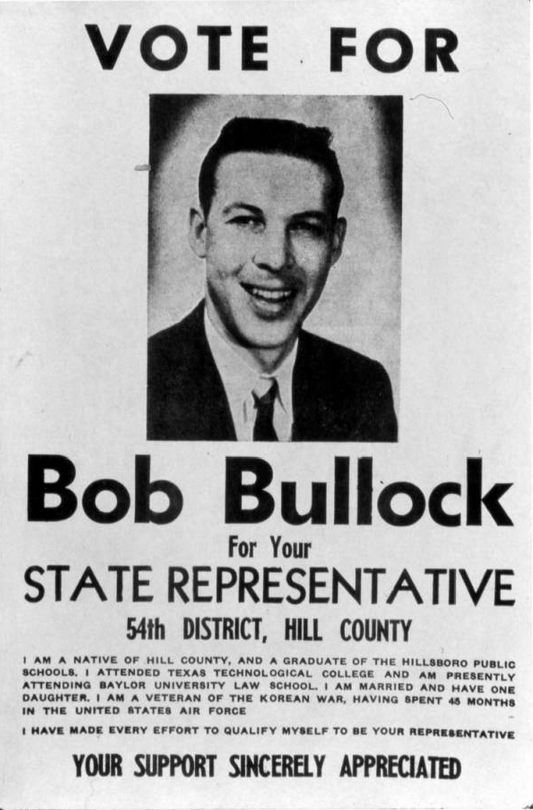
He resigned from the legislature in 1959 and did not return to public service until 1967 as an aide to Governor Preston Smith who eventually appointed Bullock Secretary of State from 1971-1972.
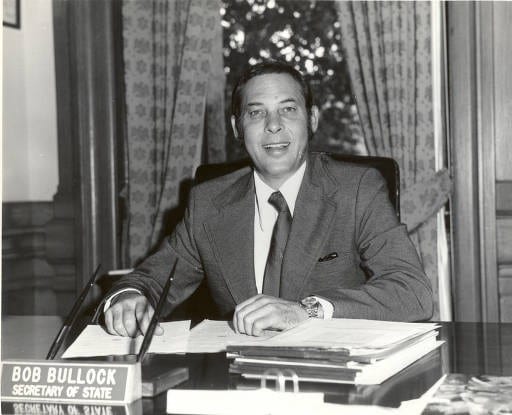
Bullock’s political career really took off when he became Comptroller of Public Accounts, a position he held for four terms. After serving as comptroller for 16 years, Bullock was elected Lieutenant Governor in 1990 and elected for a second term in 1994.
Bullock was considered by many to be the last giant of Texas politics whose years in the public service sector were filled with controversy; but they also serve as a powerful testament to his dedicated passion for making Texas a better place for all its citizens.
“The personal responsibility of good government does not end at the ballot box, but lives in the heart and soul of all of us who want Texas to be the best it can be.” – Bob Bullock
Credits
BCPM ; Digital Projects Group
COMPTROLLER OF PUBLIC ACCOUNTS: 1975-1991
In 1975 Bob Bullock became Comptroller of Public Accounts, a position he proudly held for four terms. As comptroller, Bullock’s primary responsibilities were to collect tax revenue owed to the State of Texas, provide statements of the previous fiscal year and estimate current and future revenue. The comptroller certifies the amount of funds that the Legislature is allowed to use and they cannot, by law, use more.
“Bullock runs one of the few efficient operations in government. It’s the best place to learn about real administration.” – Garry Mauro
Although he gained a reputation for sometimes being abrasive and insensitive, he was highly respected even by those who disagreed with his methods. He has been credited with completely overhauling and transforming the comptroller’s office by making it more efficient. Many argued that he turned it into one of the best – if not the best – run departments in the state.
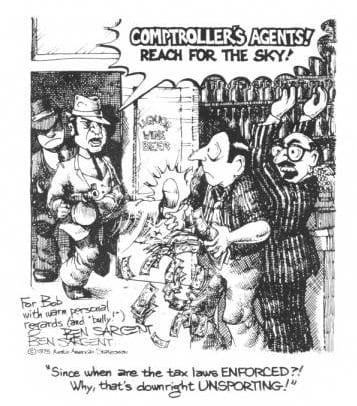
One of Bullock’s first priorities after being elected Comptroller was to crack down on business owners who had not paid their state sales taxes. This crack down led to his infamous and much feared “Bullock Raiders,” the term given to the individuals who visited businesses known to have delinquent accounts.
Bullock cared deeply for Texas’ wellbeing and often worked inhumanly long hours to ensure he was doing everything in his power to make it the best state possible. While Comptroller, Bullock made it a prerogative to actively recruit and hire women and minorities, he incorporated the newest computer technology which substantially increased the department’s productivity, he aggressively pursued the collection of delinquent sales tax from business owners giving rise to the much feared “Bullock’s Raiders” and he advocated for better water and sewer service for the economically depressed colonias along the Texas border, an effort he continued as Lieutenant Governor.
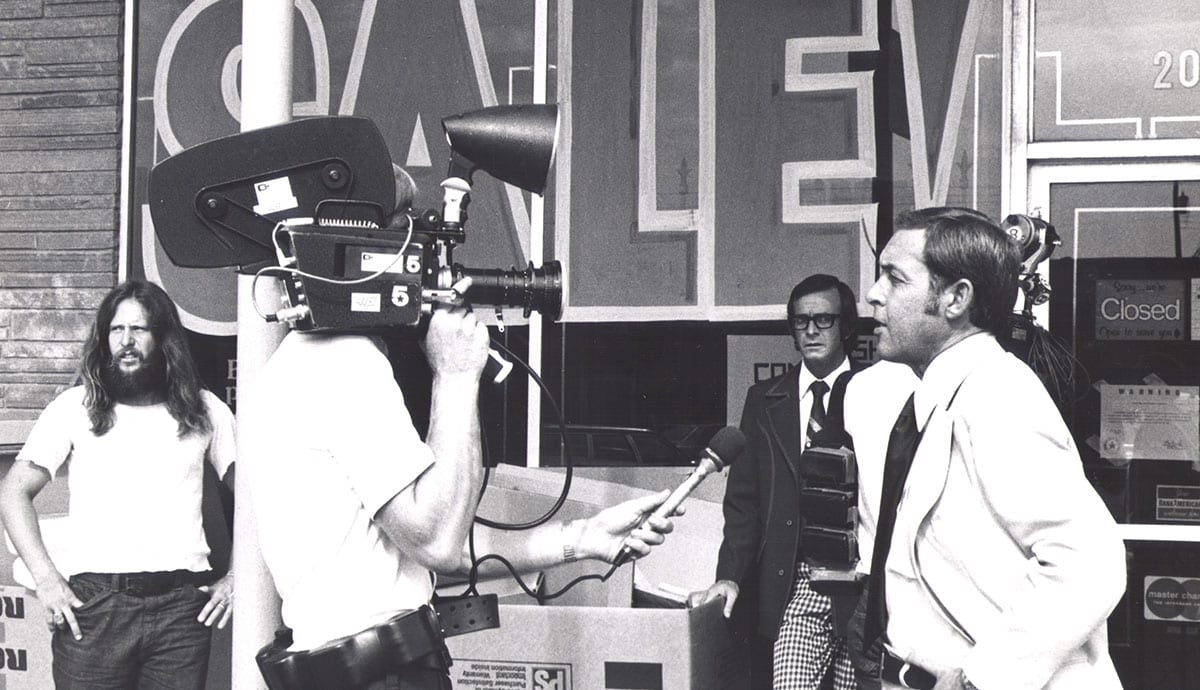
Bullock interviewed by a TV crew outside a Texas electronics store during a raid.
While reminiscing about his experiences working for Bullock, Bill Aleshire described how Bullock “gave us hope that if you can take something that old-fashioned, shake it up and make it work, it could be done elsewhere.”
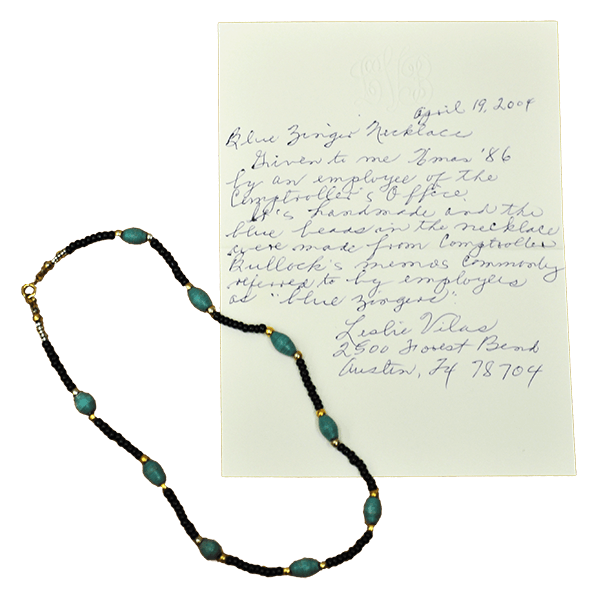
“When you got a zinger, you knew he was personally interested. He would use them to let you know when he was unhappy with you, or that you had done a particularly good job on something. Either way, it would make or break your day to get one.” – Former Bullock employee
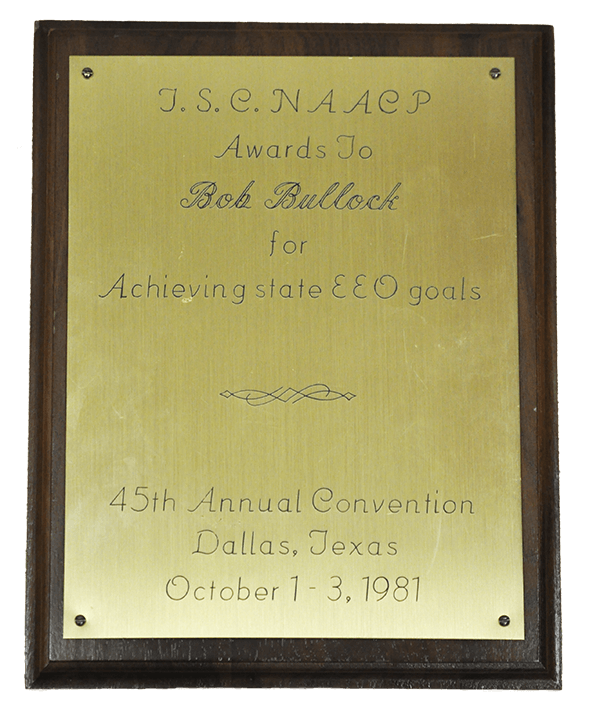
Bullock’s efforts in hiring women and minorities to make the comptroller’s office more equally representative of the state’s demographics was applauded and considered one of his greatest achievements during his time as Comptroller.
LIEUTENANT GOVERNOR: 1991-1999
Bob Bullock continued his passion for improving the lives of all Texans when he assumed the second highest office in Texas. In 1991, Bullock became Texas’ Lieutenant Governor alongside its newly elected Governor Ann Richards. Four years later, he was elected for a second term during which he developed a strong bond and excellent working relationship with Governor George W. Bush despite their allegiances to opposing political parties. Bullock always insisted that politicians leave their politics at the door and adopt a bipartisan position to better allow them to make choices that were truly best for Texas and not just those that align with their party’s ideology.

Although there are various speculations as to why, Bullock and Ann Richards reportedly did not get along and experienced a tumultuous working relationship during their four years together.
Bullock and George W. Bush, on the other hand, worked well together despite coming from different political parties. Bullock believed that Bush truly cared for the wellbeing of Texas and wholeheartedly supported him when Bush ran for a second term as Governor against Democratic contender Garry Mauro.
During his first run for office, The Victoria Advocate published an editorial endorsing Bullock for Lt. Governor in which they insisted that “Mr. Bullock is a true leader, unafraid to take strong stands on controversial issues.” “He understands state finances better than anyone around and he has the vision to address the myriad thorny issues that confront Texas. He will hold legislative feet to the figurative fire and get the state moving” and he certainly did not disappoint.
As Lt. Governor, Bullock was partially responsible for urging lawmakers to undertake a major rewrite of the Public Education Code which happened in 1995 allowing schools increased local control. He also encouraged lawmakers to design a statewide water plan after a serious drought plagued Texas in 1997 which eventually led to the implementation of the state’s first water conservation management plan.
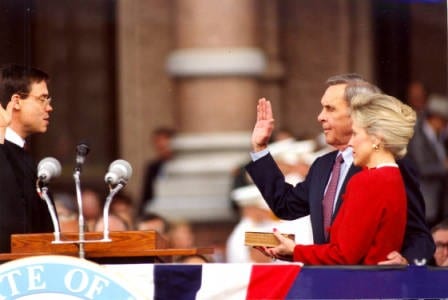
Chief Justice Tom Phillips swears in Bullock as Lt. Governor.
Despite heavy backlash against it, Bullock pushed for a state income tax but also enacted a constitutional amendment in 1993 that required voter’s approval before a state income tax could be enforced and also required that the funds from the tax be used to improve education.
In the spirit of his grandiose love for Texas, Bullock used his office to aid in the preservation of its past by securing funds for a state history museum as one did not yet exist. He also spearheaded the restoration and renovation of the Texas State Cemetery in which Bullock is now buried.
During his announcement that he would not run for another term, Bullock declared that he would leave office “with no ill will to anyone and with love, respect and admiration for all my fellow Texans. Only death will end my love affair with Texas.”
“God Bless Texas!”

Handkerchief from the 1995 Inauguration
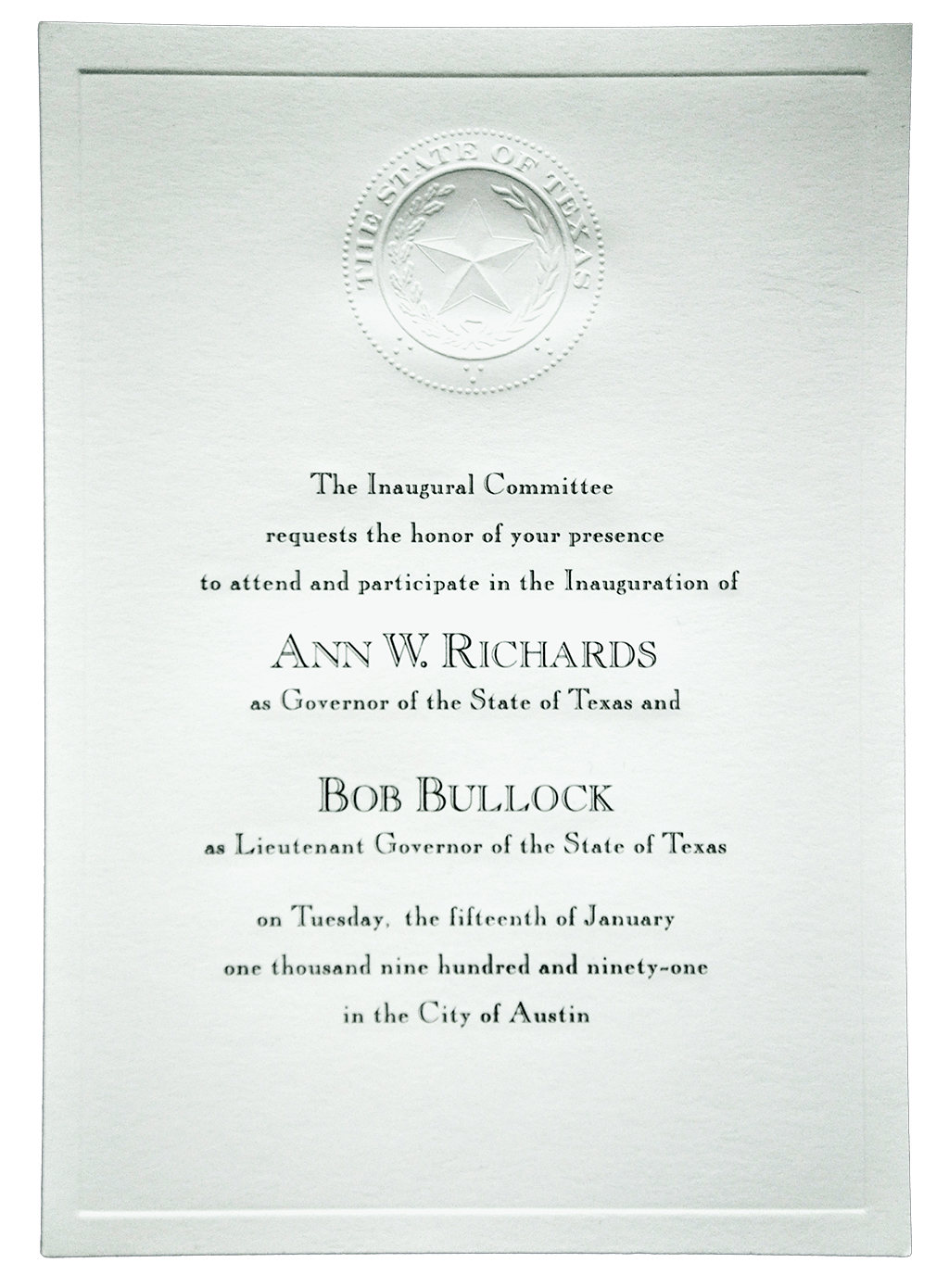
Invitation to the 1991 Inauguration
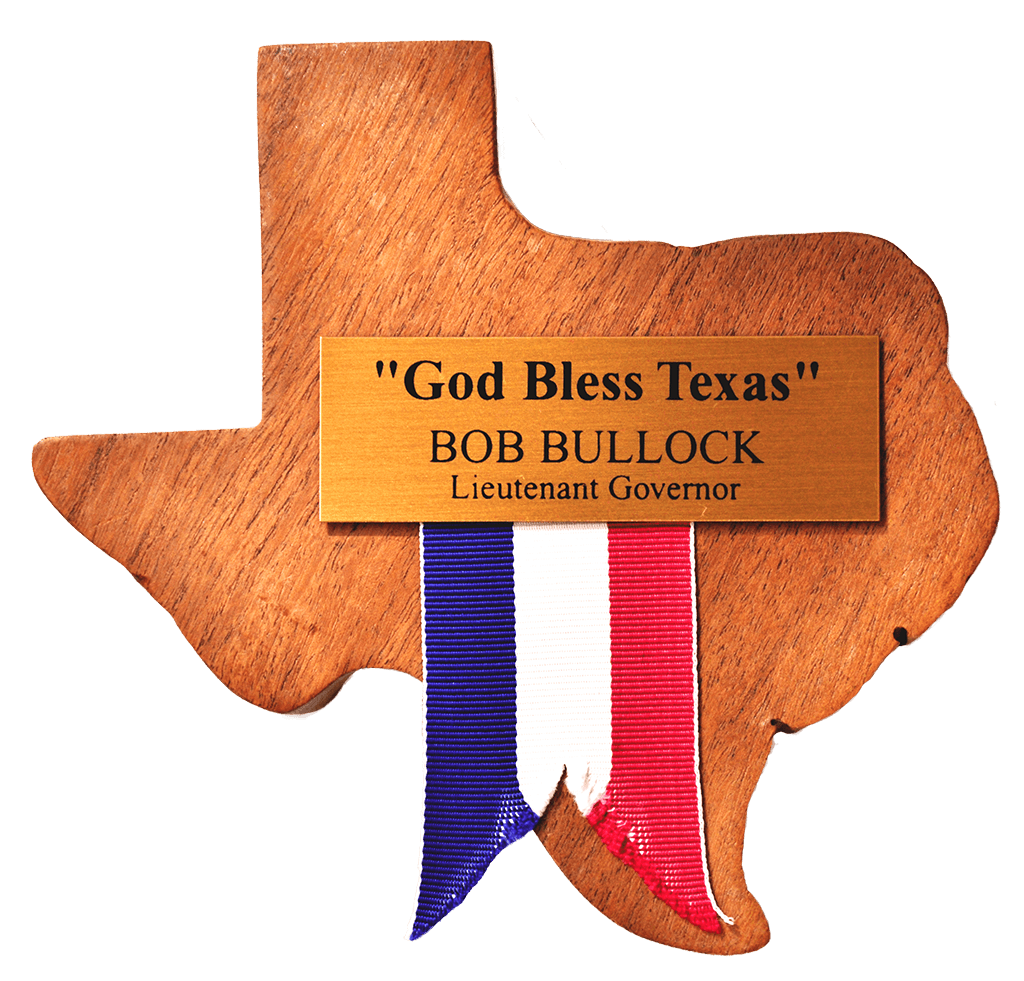
Paperweight with Bullock’s slogan
TEXAS STATE CAPITOL
It was reported that some spectators wept on February 6, 1983 as they watched flames destroy their State Capitol building, a building significant not only because of what occurs inside of it but also because of what it represents. The Capitol building in Austin is a constant reminder and vigilant symbol of the indomitable spirit and inherent grandness of Texas.
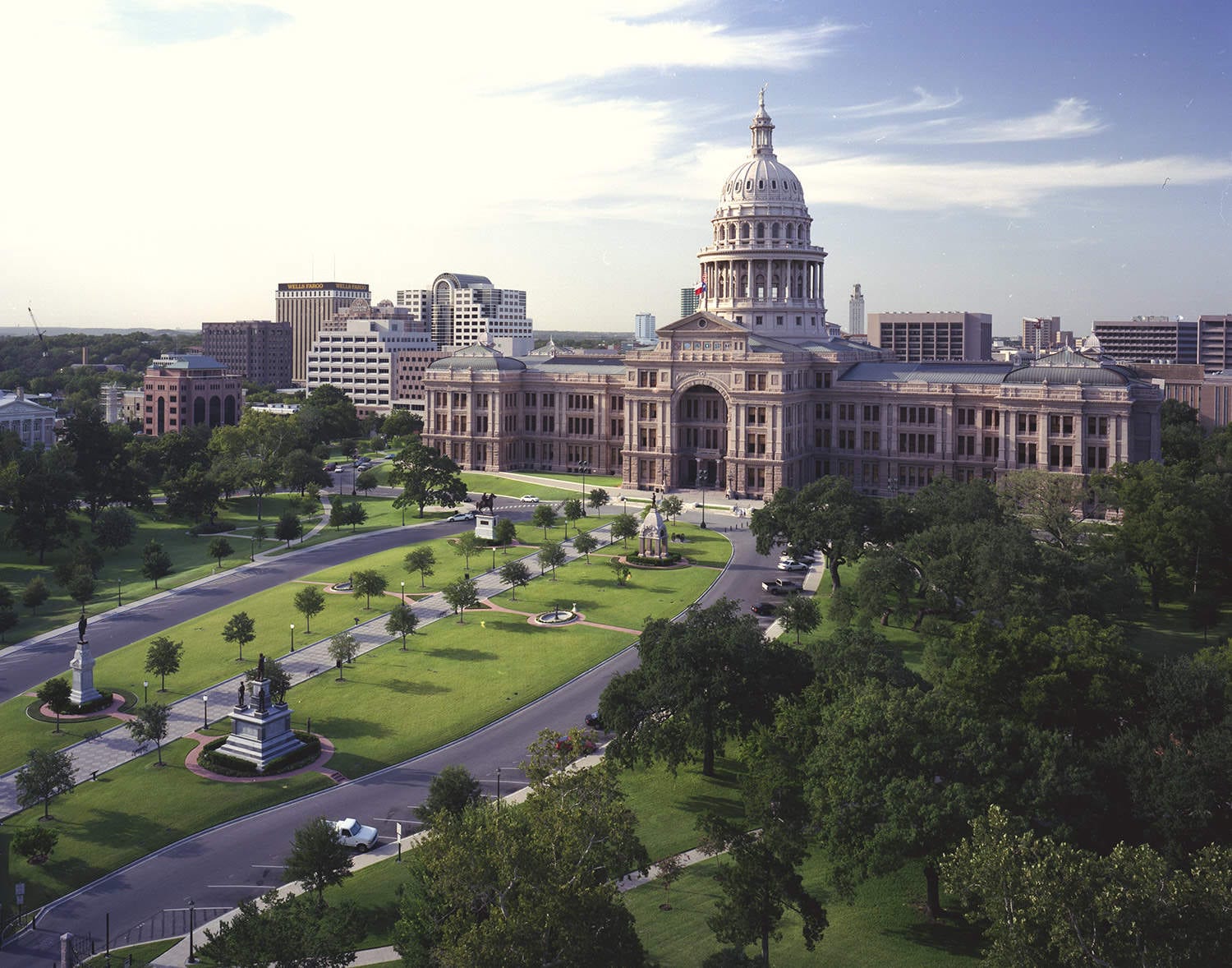
Mark White, Texas’ governor at the time of the tragedy, was distraught about the incident but unfortunately due to a state budget crunch could not initiate a complete restoration project for the building. After the fire, however, the State Preservation Board was established to preserve and maintain the building and they were able to at least refurbish the legislative chambers, a few rooms, and the Goddess of Liberty statue atop the Capitol dome.
“On and off for 40 years, I have walked through the halls of this magnificent Capitol building, 40 years in partnership with the people of Texas….” – Bob Bullock
It was not until December 1988 that a design team was assembled to create a master plan for the restoration of the building including blueprints for the construction of an underground expansion that would create more space for employees. In May 1989, the Legislature voted to fund the whole project which was completed six years later.
The Capitol was re-dedicated on April 21, 1995.
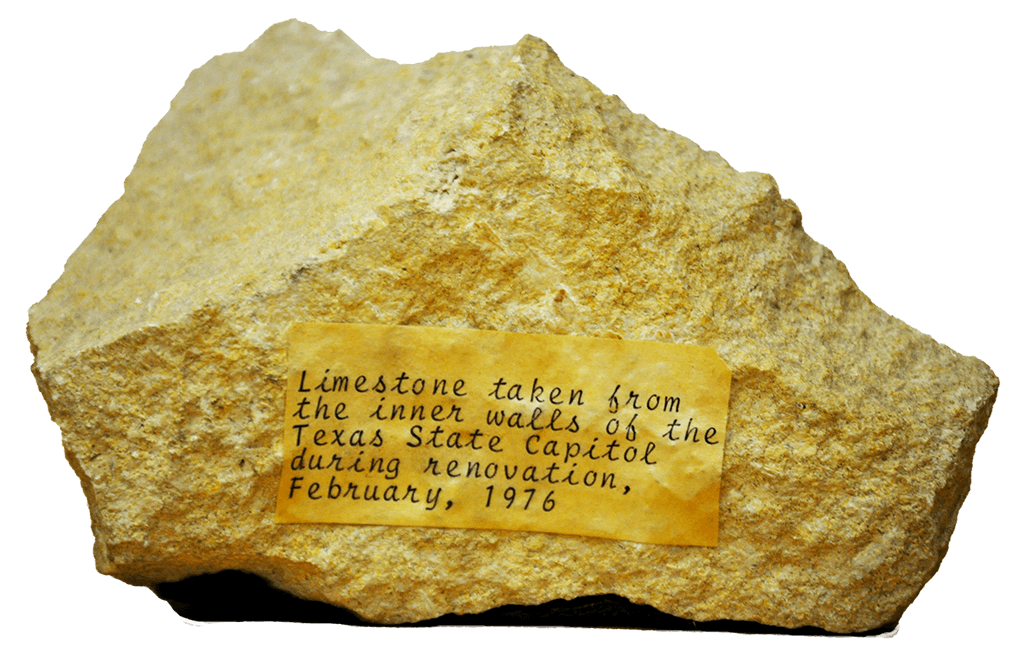
Limestone from Capitol walls
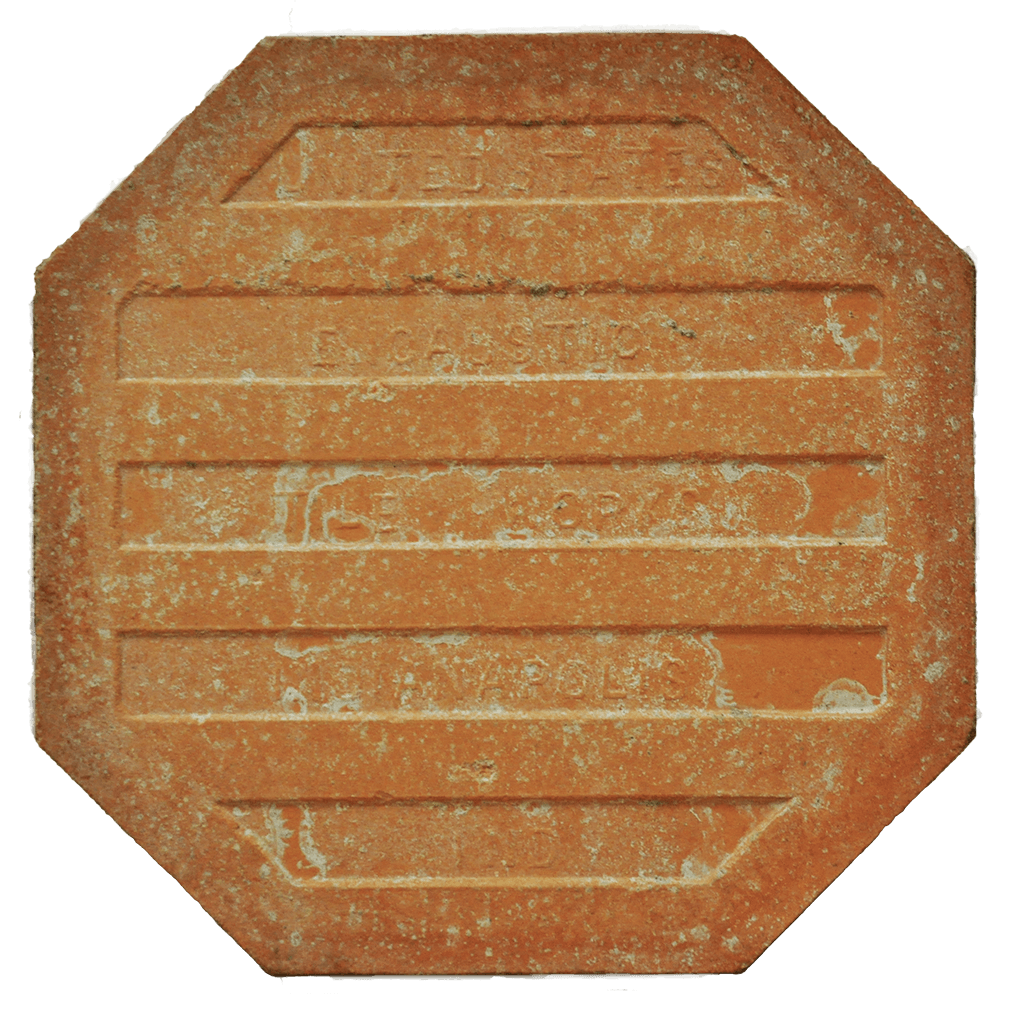
Original floor tile from Capitol

The State Capitol building has been through numerous renovations and restorations since its completion in 1888. The pieces above were taken during one its renovations in the 1970’s.
BOB BULLOCK STATE HISTORY MUSEUM
Bob Bullock received many gifts throughout his years as a politician but the gift he was given most frequently were books dedicated to Texas history. Bullock had a fierce, unabating love for his state and everyone knew it; and on Congress Avenue stands a museum that serves as a triumphant, constant reminder of this deep devotion.
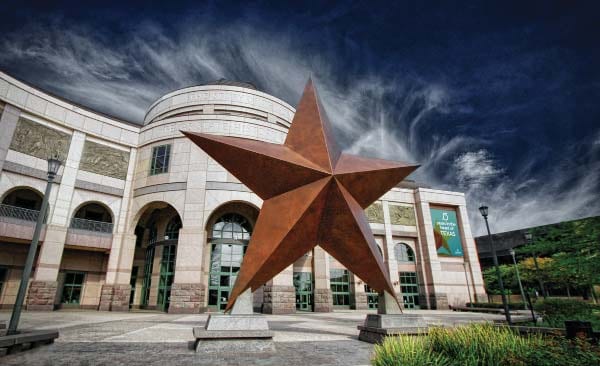
The 35-ft. tall bronze star adorning the Lone Star Plaza is a beacon for the Museum assuring nobody misses it as they wander by.
Thanks to Bullock’s efforts, visitors can now experience three floors of Texas history with over 700 original artifacts including the preserved hull of the sunken expedition ship La Belle in one of the museum’s most popular exhibits. Visitor’s museum experience is further enhanced with rotating special exhibits dedicated to specific topics such as Texas’ role in World War II, an exploration of Big Bend National Park, or their current exhibit Purchased Lives which utilizes personal accounts and artifacts to tell the story of the American slave trade.
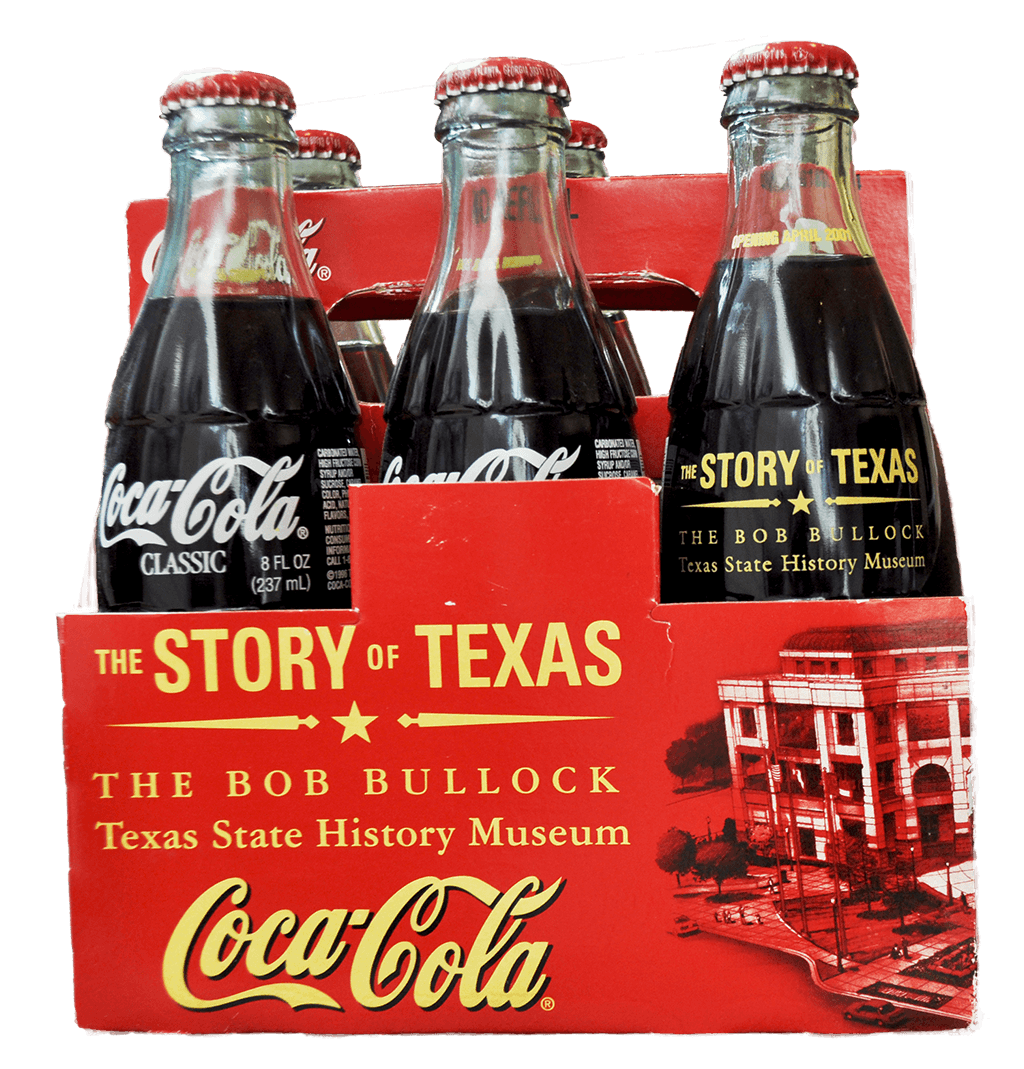
Bottles commemorating the Museum’s opening
Bullock was the guest of honor at the groundbreaking ceremony in April, 1999 but unfortunately died before the museum opened to the public in April, 2001. In his honor, a bronze statue of him was placed at the head of the staircase on the second level where it still overlooks the two-story glass entrance of a state history museum that is surely “something that Texas can be proud of.”
